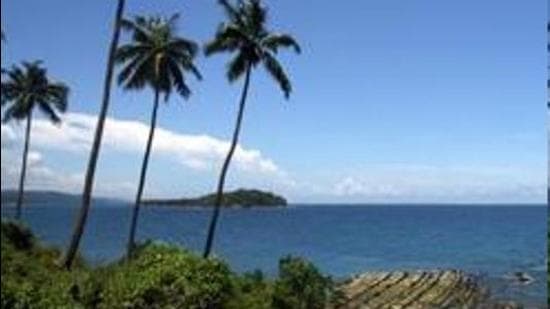An ode to the Megapode sanctuary
The NBWL denotified a wildlife sanctuary in the Nicobar Islands because it had gone underwater. If a national park on mainland India were to get burnt from forest fires, would we restore and rewild it or would the NBWL then proceed to denotify it?
In January 2021, the National Board for Wildlife (NBWL) took a series of decisions — one of them was to denotify a wildlife sanctuary in the Nicobar Islands. The standing committee of the board noted that since the Megapode Island had gone underwater post the catastrophic tsunami of 2004, the island had ceased to exist. The wildlife sanctuary was henceforth, with just one stroke, removed from the list of protected areas of India.

Does a sanctuary cease to serve its biological function once it has gone underwater? Manish Chandi, a social ecologist, who has lived and worked extensively on the islands, says an emphatic no. Even after submergence, the island is vital as a site for mangroves to recolonise it and as a site for fish breeding. This could potentially have been used by the Nicobarese inhabitants, argues Chandi. The idea of declaring an area as a sanctuary or a national park is to preserve it for posterity for future generations.
Even if it has gone underwater, the island’s legal status as a protected area should have been maintained. The reason for denotification can perhaps be related to Niti Aayog’s vision to develop “world class infrastructure” that includes hotels, resorts and water-villas along with a multi-crore shipment terminal. It also highlights the terrestrial bias we hold for marine biodiversity — once it ceased to exist as a piece of land, it had no value. If a national park on mainland India were to get burnt from forest fires, would we restore and rewild it or would the NBWL then proceed to denotify it?
There is also the question of legality. NBWL is a statutory body created under India’s Wildlife (Protection) Act, 1972. Its mandate is to “promote the conservation and development of wildlife and forests by such measures as it thinks fit”. By what measure is the removal of sanctuaries under its primary mandate is not clear.
Also Read | Developing the sister islands of Indian Ocean
In fact, even a cursory glance at the activities of the NBWL in 2020 reveals mind-boggling data. In just three meetings held last year, approximately 82 proposals were considered, of which 25 were for diversion of forestland inside national parks and wildlife sanctuaries, according to data analysed by according to data analysed by the Legal Initiative for Forest and Environment. In total, 1800 hectares of forestland were “diverted”, of which 160 hectares lay within national parks and wildlife sanctuaries. The minutes of these meetings do not show any decisions on the need to conserve species; instead, there seems to be an obsession with clearances.
Interestingly, at the same meeting when Megapode wildlife sanctuary was denotified, another one was also denotified — the Galathea bay sanctuary, currently a crucial nesting site for the rare leatherback turtles. The objective was to make way for the development of an international shipment project. While, on the one hand, Niti Aayog claims it is looking at “holistic and sustainable development” for the island, it is not clear how destroying vital turtle nesting sites comes under this definition. Its plans have already drawn criticism for being oblivious to the geographical fragility of the ecosystem or its people.
With the threat of the climate crisis, storm surges and extreme weather conditions are likely to be more frequent. Does it really make sense to be investing in such heavy infrastructure, slated to be worth more than ₹75,000 crore? So what are the possible solutions?
Chandi proposes initiating a dialogue with the people who live on these islands as opposed to following experts sitting in Delhi. Take them in confidence, get ground realities crystal clear, help them get their house in order, before bringing in any changes, he suggests.
There are other examples to learn from. Vaan island in the Gulf of Mannar was also facing submergence. Scientists undertook a massive restoration effort and today its land cover has increased by 55%.
As we mark the World Environment Day, lets spare a thought for the wildlife sanctuaries that have silently been wiped off India’s island maps. Yes there is much to celebrate, also much to ponder.
Bahar Dutt is an environment journalist and Associate Professor, Shiv Nadar University. The views expressed here are her own






